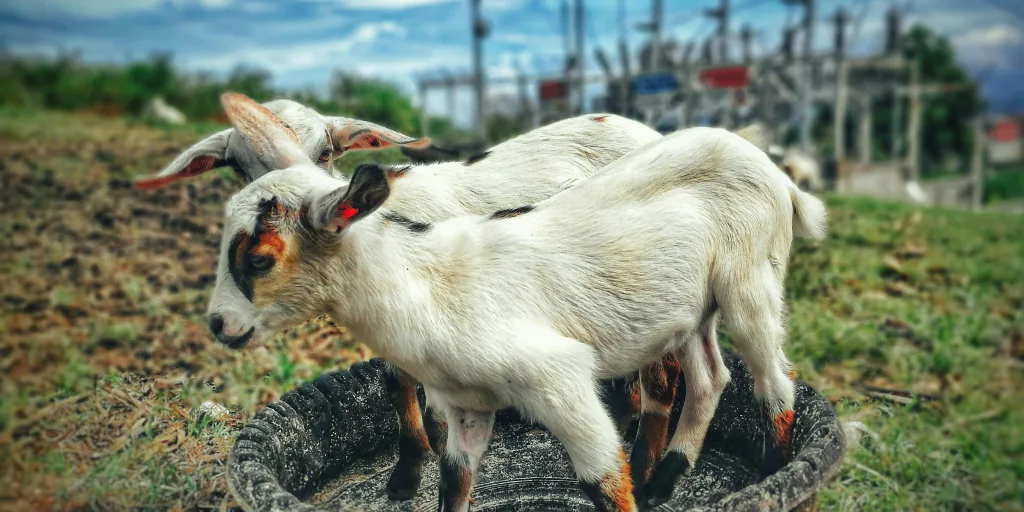Goat farming is quietly becoming one of the most promising agricultural ventures in the United States. While it might not command headlines like high-tech hydroponics or organic microgreens, the humble goat—adaptable, resilient, and incredibly useful—is creating a solid niche in the American livestock economy. From meat and dairy to fiber and brush-clearing services, goat farming offers multiple revenue streams and a lower barrier to entry than many other animal husbandry operations.
This guide will unpack everything you need to know about starting and succeeding in the goat farming business in the USA—backed by practical insights, industry data, and tried-and-true tips from seasoned farmers.
Why Goat Farming Is Gaining Traction in the U.S.

In the past two decades, goat numbers in the U.S. have steadily grown, and for good reason. Goat meat—commonly called chevon or cabrito—is increasingly in demand due to the rising immigrant population from regions where goat is a staple: the Caribbean, Africa, the Middle East, and South Asia. Meanwhile, goat milk is prized for its digestibility and suitability for people with lactose intolerance. Even goat cheese has carved out a gourmet corner in American culinary circles.
But what really draws both beginners and seasoned ranchers to goats is their versatility. A herd of 30 goats can produce meat, milk, fiber, manure, and even serve as natural weed control—all from a relatively small plot of land.
Goat Farming Business Models
One of the key advantages of goat farming is the flexibility in how you position your business. Here are a few common models:
- Meat Goat Farming: Most popular in the U.S., using breeds like Boer and Kiko.
- Dairy Goat Farming: Produces milk and artisanal dairy products. Key breeds: Alpine, Nubian, Saanen.
- Fiber Production: Less common, but profitable. Breeds include Angora (for mohair) and Cashmere goats.
- Breeding and Selling Kids: Raising premium breeds for sale to other farmers.
- Agri-Tourism Add-ons: Goat yoga, farm visits, cheese-making workshops, and petting zoos.
Many successful goat farms combine two or more of these models to diversify income and reduce risk.
Planning and Market Research
A surprising number of new farmers jump in without a clear business plan. That’s a mistake. Before purchasing your first goat, ask yourself:
- Who is your customer? Local butcher shops? Restaurants? Farmers markets? Online buyers?
- What will your main product be? Meat, milk, cheese, breeding stock, or something else?
- What’s the competition like in your area? A quick scan of local farms and Google Trends can be revealing.
- Can you access processing facilities? USDA-certified abattoirs are essential if you plan to sell meat retail.
Pro tip: Use data from USDA, Small Business Administration, and your local agricultural extension office to refine your market understanding.
Legal Requirements and Zoning Laws
Starting a goat farm isn’t just about animals. You’ll need to navigate:
- Business licensing (LLC, sole proprietorship, or partnership)
- Zoning permits: Some municipalities restrict livestock within city or suburban limits.
- Animal health regulations: Including vaccinations, disease control, and tagging.
- Liability insurance: Especially critical if your farm is open to the public.
Check both state and federal laws. For instance, the USDA offers guidelines on interstate goat transport, scrapie disease prevention, and organic certification.
Choosing the Right Goat Breeds
Goats are not a one-size-fits-all animal. Your breed choice should align with your business goals:
- Boer: The king of meat goats. Fast-growing and muscular.
- Kiko: Hardy, parasite-resistant, and low maintenance.
- Nubian: Excellent milk yield with high butterfat.
- Alpine & Saanen: Known for their large volume of milk.
- Angora & Cashmere: Niche fiber markets, but can be profitable if managed well.
Starting with a mix of 10 to 20 does (females) and one or two bucks (males) is a smart way to test your setup and build experience.
Land, Shelter, and Infrastructure
Contrary to popular belief, goats don’t need huge acreages. A couple of acres can support a small herd, provided there’s rotational grazing and supplemental feeding.
Shelter tips:
- Simple three-sided sheds work in most climates.
- Keep it dry and well-ventilated.
- Fencing is more critical than shelter. Use woven wire or electric fencing to keep goats in and predators out.
Pro tip: Goats are escape artists. If they can climb, crawl, or chew through it, they will.
Feeding and Nutrition
Goats are browsers, not grazers like cattle. They prefer leaves, shrubs, and weeds to plain grass. That’s great news if you’re using them for land clearing, but you’ll still need to supplement their diet with:
- Quality hay (especially in winter)
- Grains (in moderation)
- Mineral supplements (especially copper and selenium)
- Plenty of clean water
Feeding represents one of the largest ongoing costs in goat farming, so efficient pasture management and feed sourcing can make or break your profit margins.
Read: How To Start A Profitable Pig Farming Business
Health and Disease Management
Healthy goats are profitable goats. Here’s what experienced farmers pay close attention to:
- Deworming: Intestinal parasites are a constant battle.
- Vaccination: CDT (Clostridium and Tetanus) is a must.
- Hoof trimming: Every 6-8 weeks.
- Observation: Daily checks for signs of illness (isolation, droopy ears, coughing).
Build a relationship with a local vet who understands small ruminants. It can save you time, money, and heartbreak.
Breeding and Kidding
Most goats can breed as early as 7-10 months old, but it’s best to wait until they reach 70-75% of adult weight.
- Gestation: ~150 days (5 months)
- Kidding season: Usually in spring or fall
- Litter size: Typically 1-3 kids per doe
Keep detailed breeding records. Tracking lineage, performance, and health can improve the value of your herd and help in selective breeding.
Daily Operations
Running a goat farm is hands-on work. Your daily checklist might include:
- Feeding and watering
- Health checks
- Cleaning shelter
- Milking (if dairy-based)
- Record keeping
Depending on scale, you might need part-time help or integrate family labor. Tech tools like herd management apps can streamline operations.
Marketing and Sales Strategies
The best goat farmers aren’t just good with animals—they’re smart marketers. Here are a few proven strategies:
- Sell direct: Through farmers’ markets, online stores, or CSA subscriptions.
- Partner with restaurants: Especially those serving African, Middle Eastern, or Indian cuisines.
- Go niche: Launch your own goat milk skincare line, goat cheese brand, or organic meat label.
- Use storytelling: Social media loves behind-the-scenes farm life.
Don’t forget to register your farm on Google Business and livestock marketplaces.
Read:
Startup Costs and Profit Margins
Let’s break down an estimated budget for a beginner goat farm (10-20 goats):
| Item | Estimated Cost |
| Goats (breeding stock) | $3,000 – $6,000 |
| Fencing & Shelter | $4,000 – $8,000 |
| Feed & Supplements (1st year) | $2,500 – $4,000 |
| Vet Care & Supplies | $500 – $1,000 |
| Licensing & Insurance | $300 – $800 |
| Total | $10,000 – $20,000 |
Profitability depends on scale, efficiency, and marketing. A well-run farm can expect a 20-30% ROI after the second year.
Funding Options
Starting capital is a hurdle, but several options exist:
- USDA microloans (up to $50,000)
- FSA beginner farmer programs
- State-level agricultural grants
- Ag cooperatives and crowdfunding
You can also lease land or start with just a few goats and scale gradually.
Common Challenges and How to Tackle Them
- Predators: Invest in livestock guardian dogs or electric fencing.
- Diseases: Stick to a strict health protocol.
- Market Access: Build your brand early. Don’t rely solely on middlemen.
- Weather Extremes: Have a backup plan for food and shelter.
Resilience is part of the journey. Most challenges have workarounds, but they require attention, planning, and patience.
Success Stories: Real Farmers, Real Lessons
- Prairie Fruits Farm & Creamery (Illinois): Pioneered artisan goat cheese in the Midwest.
- Harper Hill Farm (Texas): Runs a profitable goat meat operation focused on the Hispanic market.
- Oak Spring Dairy (Pennsylvania): Leveraged agritourism and goat yoga to diversify revenue.
These stories prove that there’s no one way to succeed—just different paths, tailored to local demand and personal strengths.
Final Thoughts
Goat farming in the USA isn’t a get-rich-quick scheme, but it’s a business with serious potential. If you’re willing to learn, adapt, and think like an entrepreneur (not just a farmer), there’s a strong market ready for what you can produce.
Start small. Build local. Stay informed. And above all, respect the animals and the land that make this all possible.

Rupak Chakrabarty is a small business coach and founder of 99BusinessIdeas.com, where he and his team share practical guides and startup resources for entrepreneurs worldwide. With over a decade of experience in business consulting, Rupak has advised startups and small businesses across industries, including retail, food services, making money online, and e-commerce. His mission is to simplify entrepreneurship by providing actionable insights that help everyday people turn ideas into profitable ventures.
Contact: rupak@99businessideas.com

